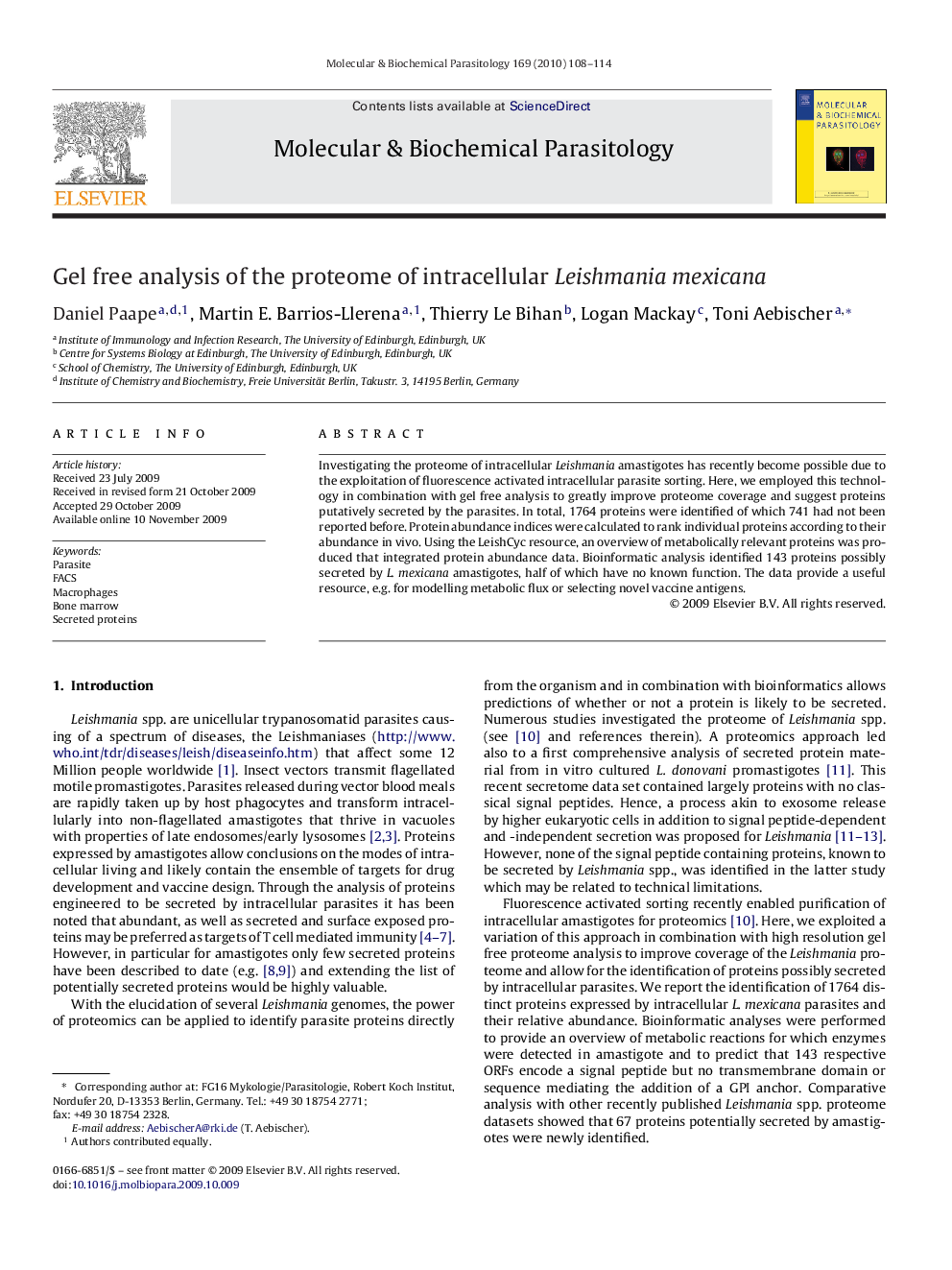| Article ID | Journal | Published Year | Pages | File Type |
|---|---|---|---|---|
| 5915892 | Molecular and Biochemical Parasitology | 2010 | 7 Pages |
Investigating the proteome of intracellular Leishmania amastigotes has recently become possible due to the exploitation of fluorescence activated intracellular parasite sorting. Here, we employed this technology in combination with gel free analysis to greatly improve proteome coverage and suggest proteins putatively secreted by the parasites. In total, 1764 proteins were identified of which 741 had not been reported before. Protein abundance indices were calculated to rank individual proteins according to their abundance in vivo. Using the LeishCyc resource, an overview of metabolically relevant proteins was produced that integrated protein abundance data. Bioinformatic analysis identified 143 proteins possibly secreted by L. mexicana amastigotes, half of which have no known function. The data provide a useful resource, e.g. for modelling metabolic flux or selecting novel vaccine antigens.
Graphical abstractInvestigating the proteome of intracellular Leishmania amastigotes has recently become possible due to the exploitation of fluorescence activated intracellular parasite sorting. Here, we employed this technology in combination with gel free analysis to improve proteome coverage. In total, 1764 proteins were identified of which 741 had not been reported before. Protein abundance indices were calculated to rank individual proteins according to their abundance in vivo. Using the LeishCyc resource, an overview of metabolically relevant proteins was produced that integrated protein abundance data. The data provide a useful resource, e.g. for modelling metabolic flux or selecting novel vaccine antigens.Download high-res image (120KB)Download full-size image
